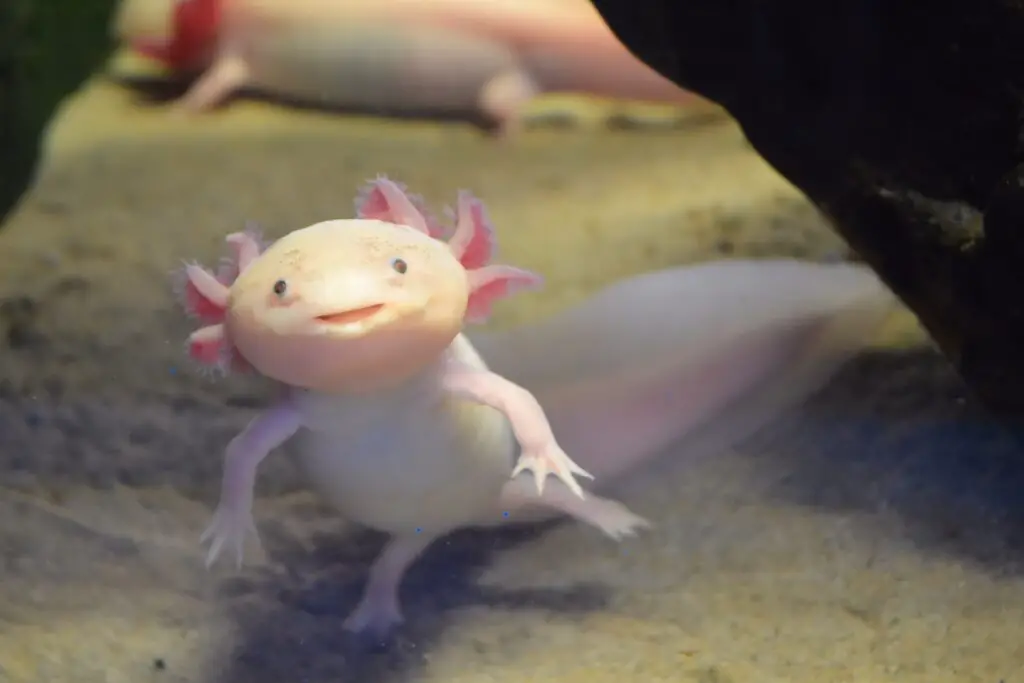
Axolotls are a critically endangered amphibian species closely related to the tiger salamander. So if these cute little neotenic creatures are more aquatic than their cousins, can Axolotls live with koi fish?
It’s not recommended to house koi fish and axolotls together. Axolotl prefers colder water temperatures, and they are solitary aquatic animals that care little for interaction with other fish and have a territorial streak. So to keep them safe, it’s better to keep them in a species-only tank.
Axolotls are cute little creatures with feathered gills and a face that reminds you of Toothless in how to train your dragon. Although they look like real-life cartoon characters, axolotls have some special requirements to consider before making them pond mates with your koi.
Pro Tip: If you’re tired of wasting money and making costly mistakes on the koi-keeping hobby or are thinking about buying koi fish but don’t know where to start, I strongly suggest you check out this ebook. I recently read this ebook, and it contains SO much useful information, such as:
- 3 proven steps to identify koi fish diseases
- WARNING: 3 things you should NEVER do when it comes to caring for koi
- When to seek professional help when it comes to looking after your koi
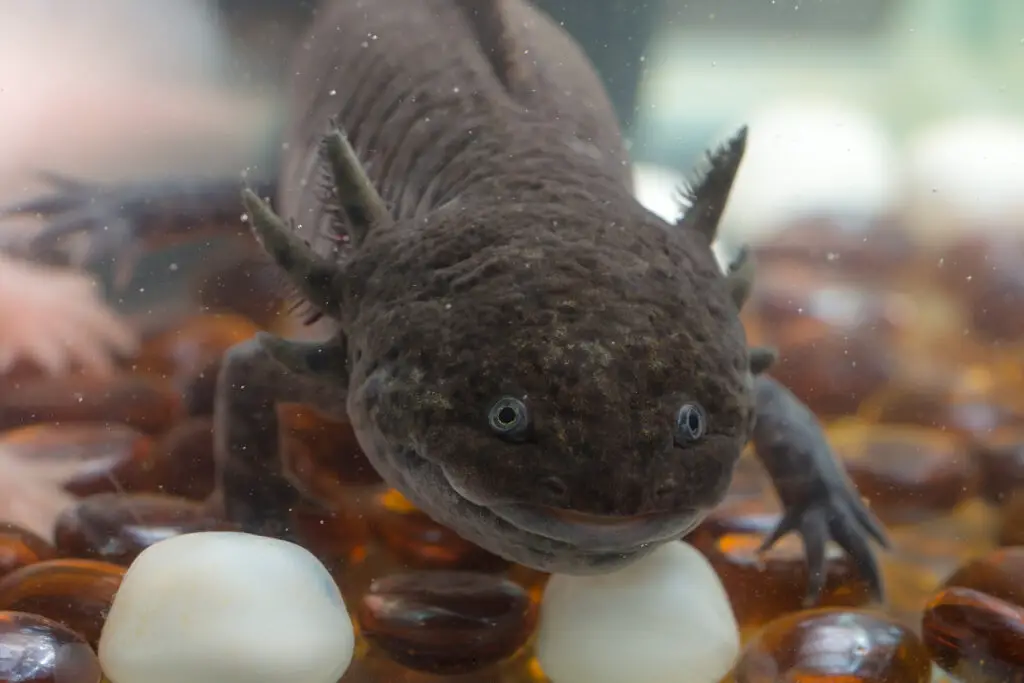
Can Axolotls Live With Koi Fish?
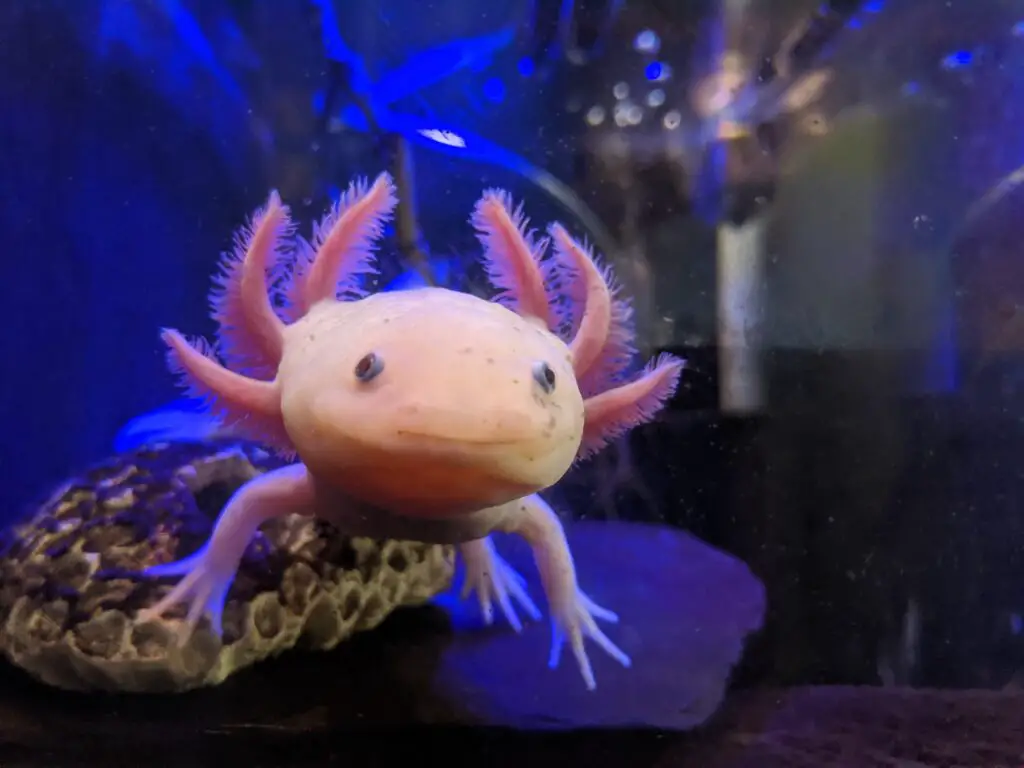
It’s not unheard of for some people to keep koi fish and axolotl together in the same water environment, but it’s not recommended.
Koi fish are better suited to ponds that provide the koi enough space for them to reach full growth potential and provide them with the depth they thrive in.
Axolotl has finger-like feathery gills that resemble worms to the resident koi, and the gills could land up being the attention of a hungry koi. The sheer size of a fully grown koi can also pose a threat to the much smaller axolotl that reaches less than half the size of a fully grown koi.
Koi fish are strong swimmers with large mouths and could easily nibble or make a meal of your exotic axolotl.
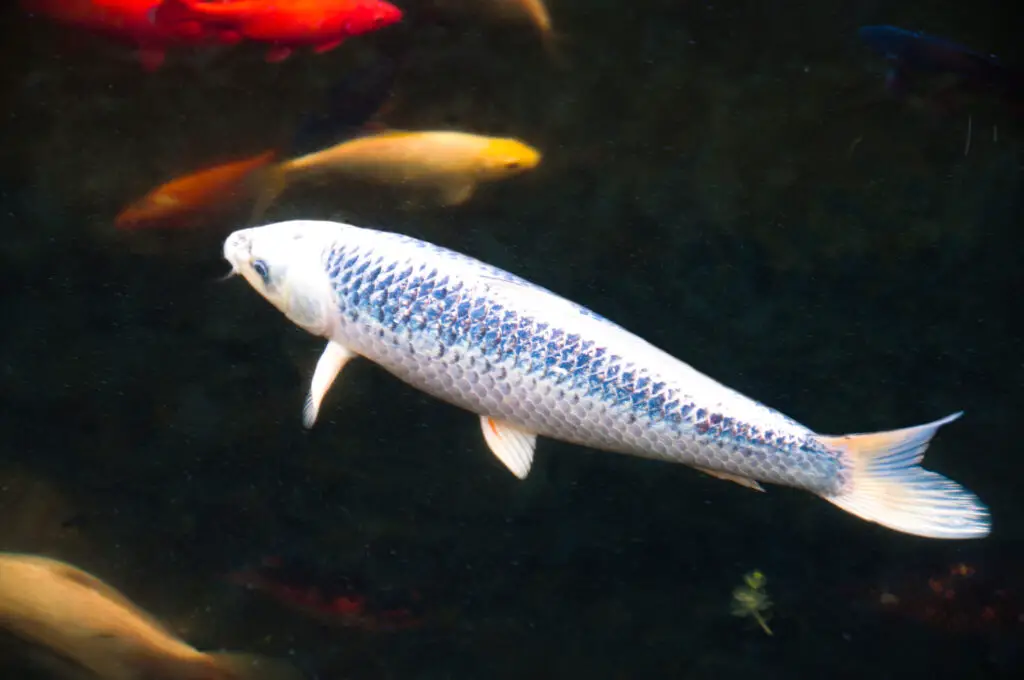
| Comparison chart of axolotl versus koi fish | ||
| Axolotl | Koi Fish | |
| Care Level | Intermediate | Intermediate |
| Size | 11 inches (28cm) | 24 – 36 inches (60 – 91cm) |
| Habitat | Freshwater tanks, with plants and hiding places. | Freshwater tanks or ponds |
| Diet | Carnivore | Omnivore |
| Optimum Water Temperature | 61°-64°F (16°-18°C) | 65°-77°F (18°-25°C) |
| Optimum pH Level | 7.4 – 7.6 pH | 7.2 – 7.4 pH |
| Optimal water hardness | 7-14° dGH | 9-18° dGH |
Why Koi Fish And Axolotl Should Be Kept Separate
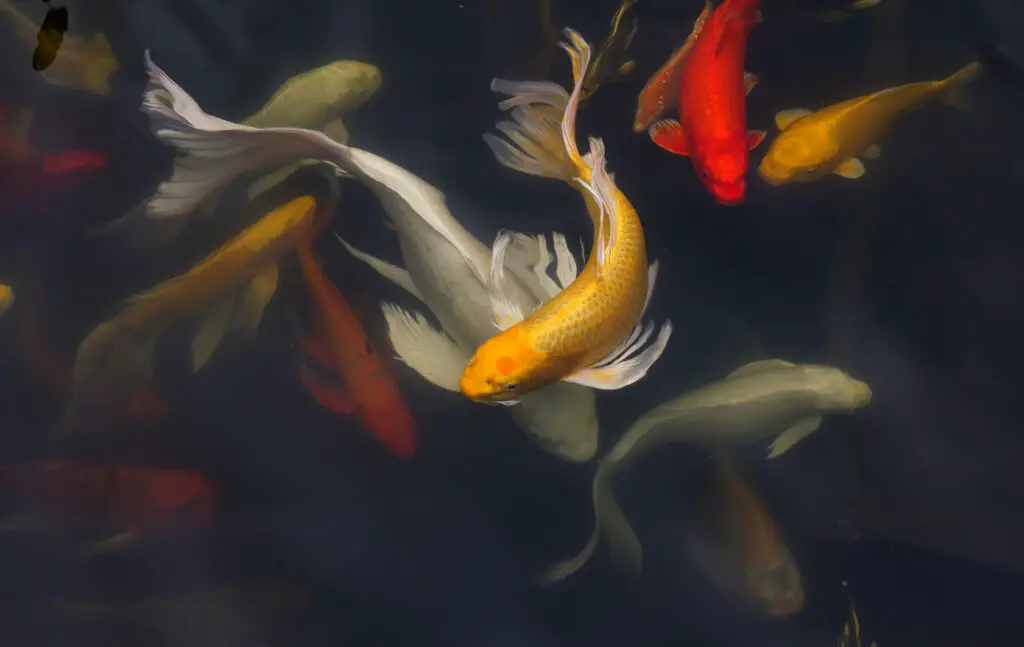
Koi fish and axolotls share some similarities concerning their requirements, but at the same time are vastly different.
Keeping them separate is essential to ensure each species is happiest, with little stress, and enjoying optimal care.
Water Conditions
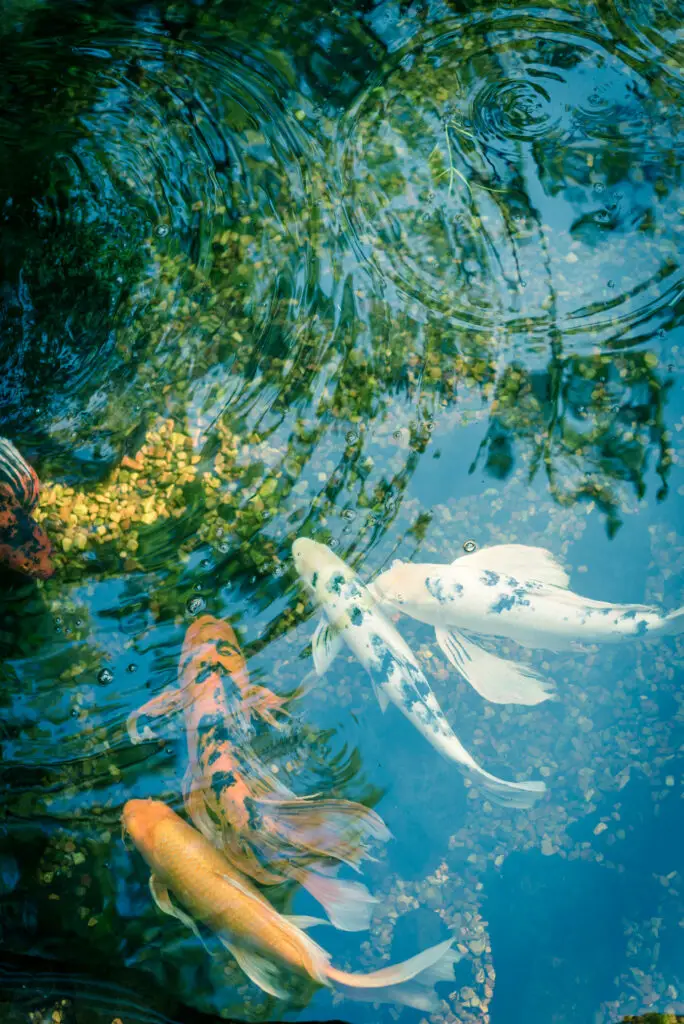
Axolotls are used to the cool waters of high-altitude lakes and prefer temperatures between 61° and 64° Fahrenheit. If water temperatures exceed 75° Fahrenheit, the axolotls will become stressed, increasing their chances of illnesses.
On the other hand, koi fish are most comfortable at temperatures slightly warmer than what axolotls enjoy, with their optimum range of 65° to 77° Fahrenheit.
Both these species can survive in colder waters during the winter periods, which slows their metabolism down and reduces their feeding cycle.
Feeding And Diets
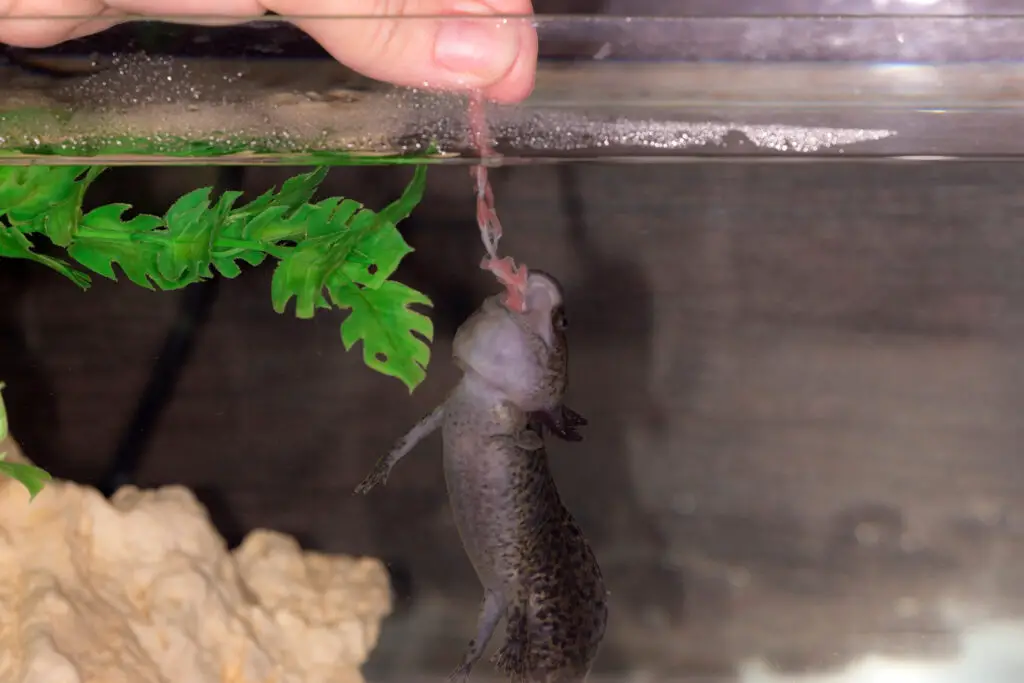
Axolotls are carnivores as opposed to koi fish which are omnivores. They share some common foods that can create competition during feeding, such as earthworms, frozen or live blood worms, and brine shrimp.
Although it’s safe for axolotls to eat koi pellets, most of them will turn their nose up at it. They will prefer specialized carnivorous fish pellets such as trout and salmon pellets, with daily servings of live or frozen blood worms, waxworms, small feeder fish, shrimp, insects, and even beef strips or liver.
Temperaments And Personalities

Axolotls are friendly and somewhat curious creatures that will happily explore their surroundings. They care little for socializing and can have a territorial streak in them. Again, like individual koi fish, each axolotl has its own personality traits.
Some axolotls will be shyer than others, while some will be territorial and can have a tendency to bite other fish or axolotls in the tank, biting at gills, fins, and appendages.
Size and Strength
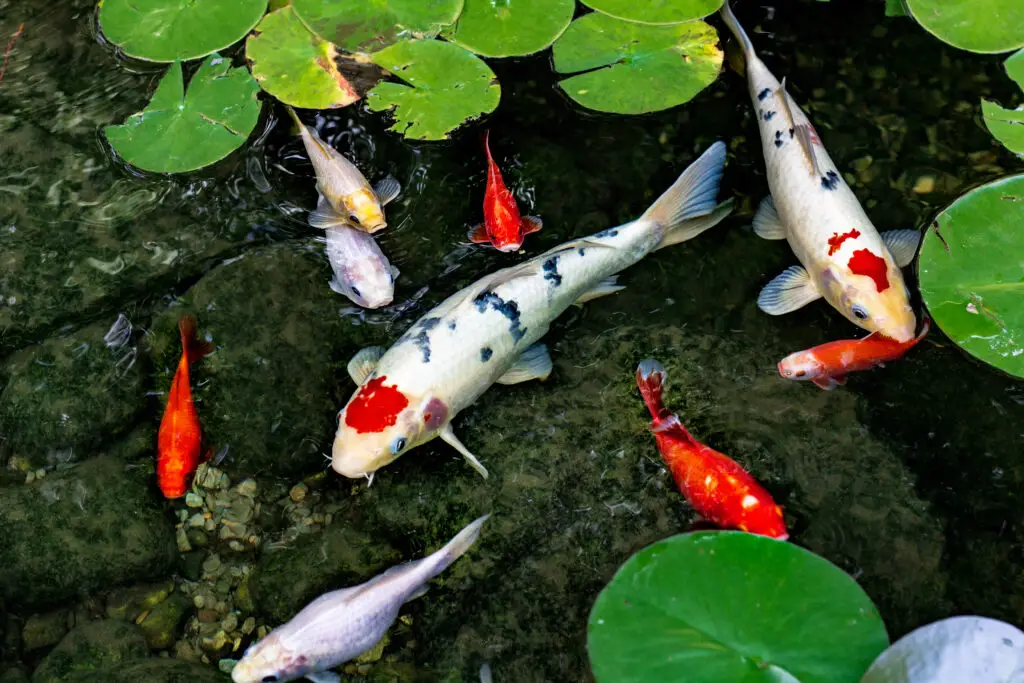
Koi fish grow much larger than the average-sized axolotls, which reach inches, so the larger 24-36 inch sized koi can easily intimidate the much smaller axolotl.
Unfortunately, this can increase the stress levels in axolotls, making them susceptible to infections and diseases.
Can Axolotls Live In A Pond?
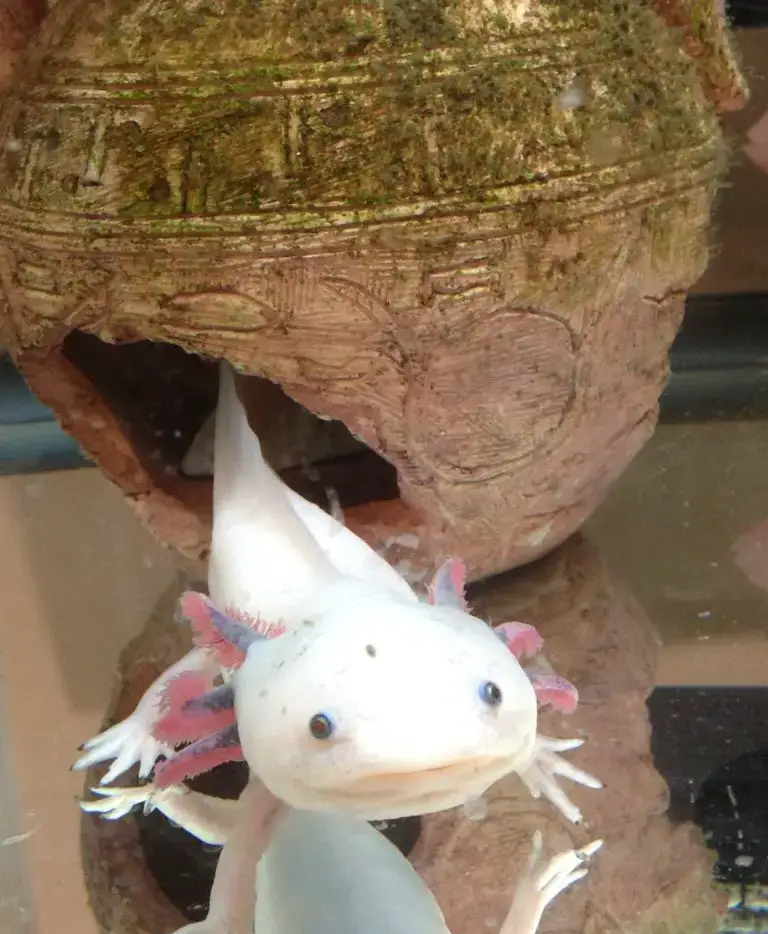
The short answer to can axolotls live in a pond is yes, they can.
Axolotls originate in the high-altitude lake of Xochimilco in the Valley of Mexico. They are native to cold freshwater lakes, providing them with all the necessary requirements to live in ponds.
As amphibians, they possess gills and lungs but are strictly aquatic creatures and cannot survive outside of water for very long.
When considering a pond versus an aquarium setup, it’s essential to consider certain factors to ensure that your axolotl is happy and stress-free.
Indoor Pond Or Outdoor Pond
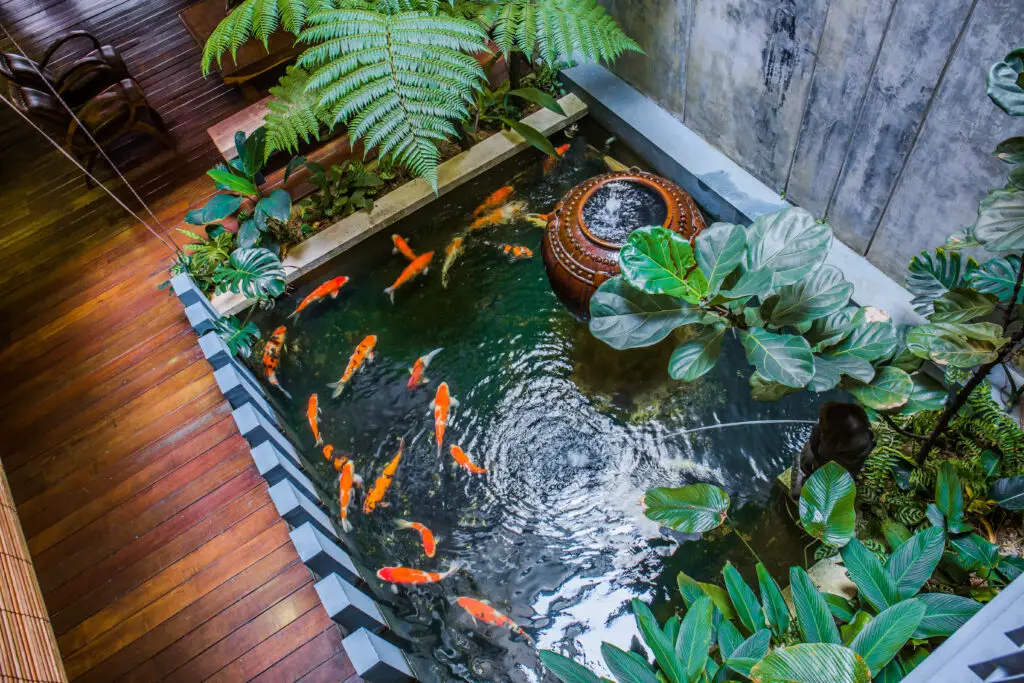
Axolotl originally come from natural lakes, so it’s no surprise they could live in a pond. However, when choosing whether to keep them in a pond or not, you must consider whether to keep them in an indoor or outdoor pond.
Axolotl prefers shaded and dim lighting, so a pond in direct sunlight is not ideal. Also, depending on where you live, you need to be able to keep the pond water cool to its optimum temperature during the hot summer months.
Protection From Predator
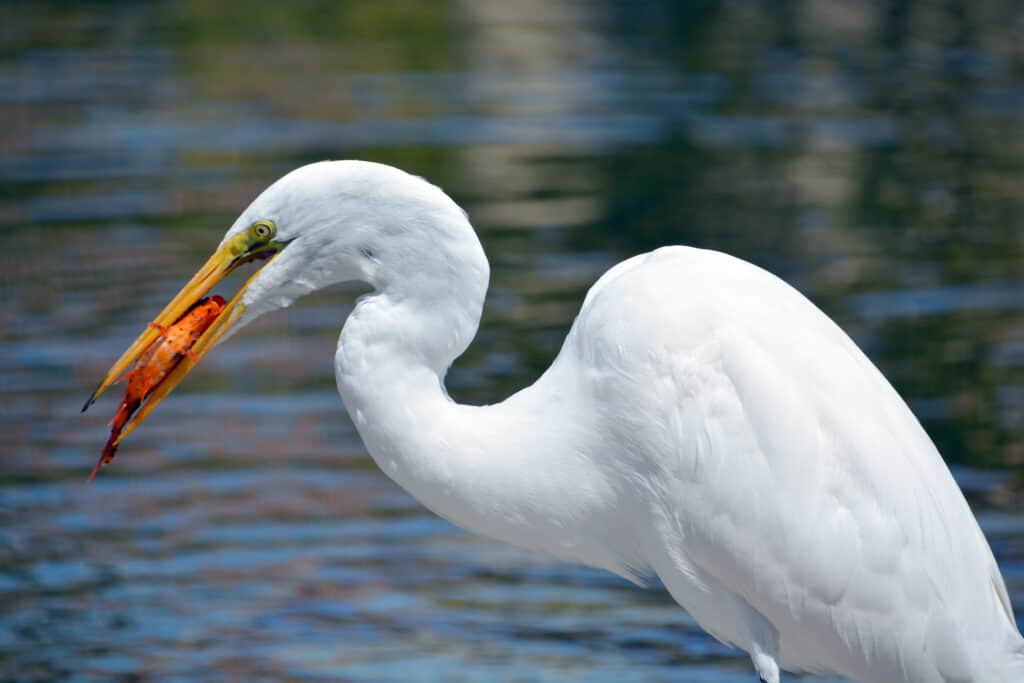
Axolotls don’t have many predators apart from larger fish like carp and tilapias. Another natural predator that can pose a threat is herons and storks. Then in their natural habitat, axolotls, although a protected species are still hunted as they are considered a delicacy by Mexicans.
Another risk that wild axolotls face is the increasing pollution from growing metropolitans, polluting the waters that this dying species calls home.
Indoor ponds can eliminate the threat of predators unless you have a cat that enjoys sushi.
Temperature
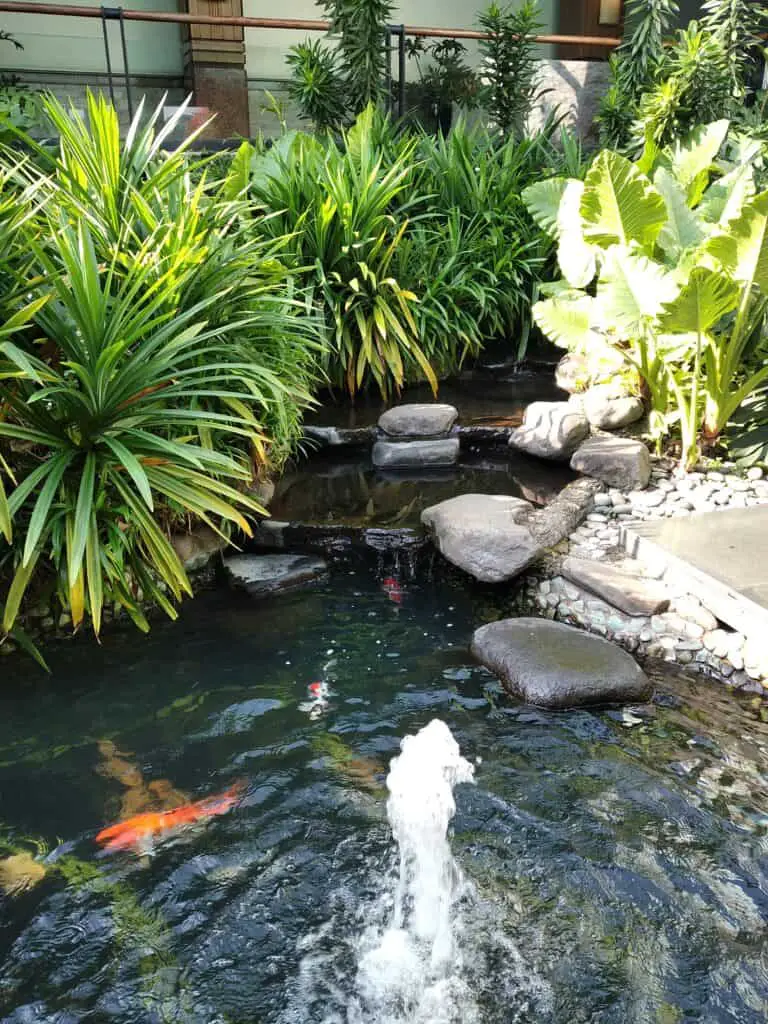
Maintaining an optimal temperature can be difficult in outside ponds in warm areas. Another consideration is during cold winters, if the temperatures get cold enough to freeze, you need to ensure the pond is deep enough to prevent your axolotl from freezing.

Ease Of Maintenance
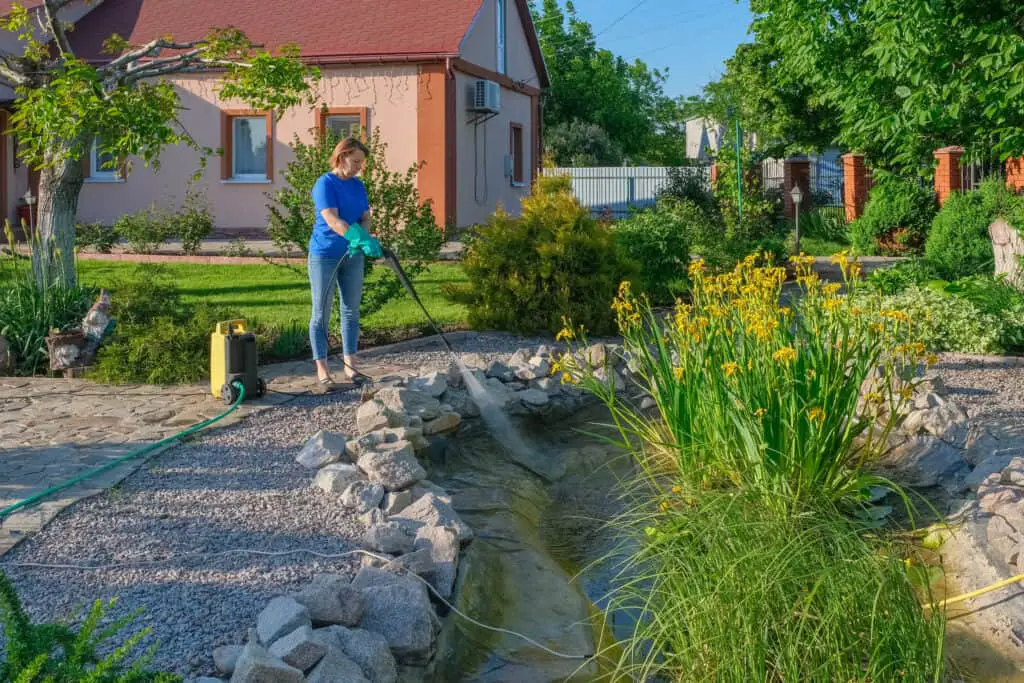
Ease of maintenance is essential as they produce a lot of waste, so keeping their water clean and within an accepted pH level is important. Weekly drains and cleaning or a proper filtration setup are important to provide them with a healthy environment.
Escape Tactics
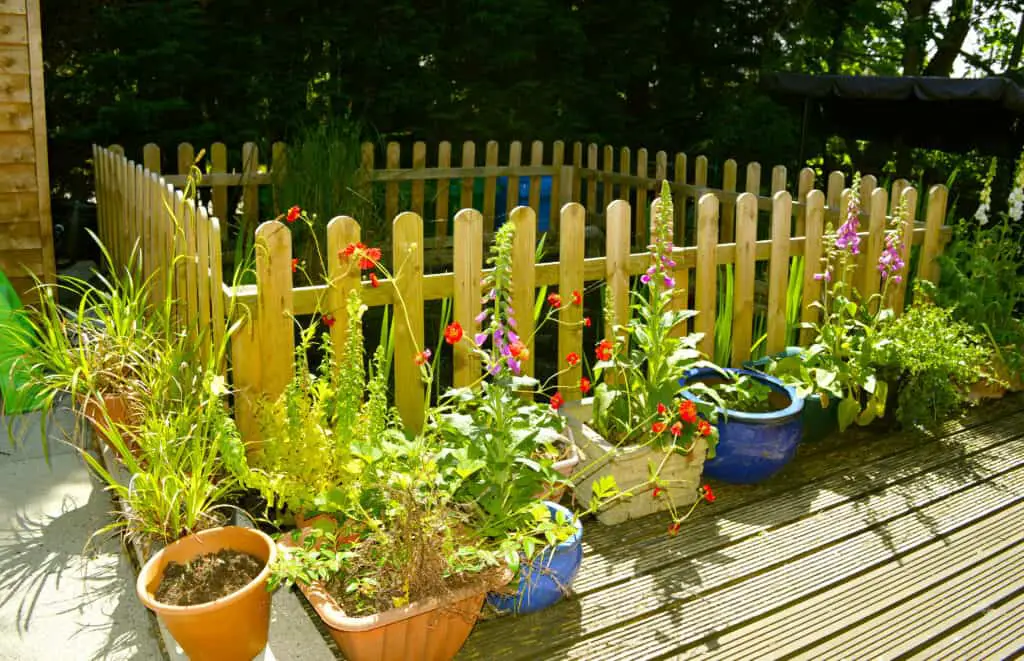
Although they can’t survive outside the water for very long, at most an hour, they may have the tendency to escape their environment, so ensuring your pond is well fenced off, preventing them from wandering away from the edge of the water, is essential.
What Size Tank Does Axolotl Need?

Axolotl is no more than 11 inches fully grown on average, but if you decide to keep them in an aquarium, they require a minimum of 30 gallons of water for your first axolotl and a minimum of 10 gallons per extra axolotl that you add.
They produce a lot of waste, so the more water you have, the longer you can go between water changes.
Conclusion
The axolotl amphibian may be a cute addition to a tank or pond. Still, these are solitary creatures that don’t care much for the company of others. Being carnivores, they are better off in a single species tank to prevent any harm to other fish and prevent fish like koi from mistaking their feathered gill fingers as worms that could be considered a tasty treat.
References
https://www.nationalgeographic.com/animals/amphibians/facts/axolotl
.
https://dwazoo.com/animal/axolotl/
https://www.reddit.com/r/axolotls/comments/nws6l3/question_can_axolotl_be_kept_with_koi/

